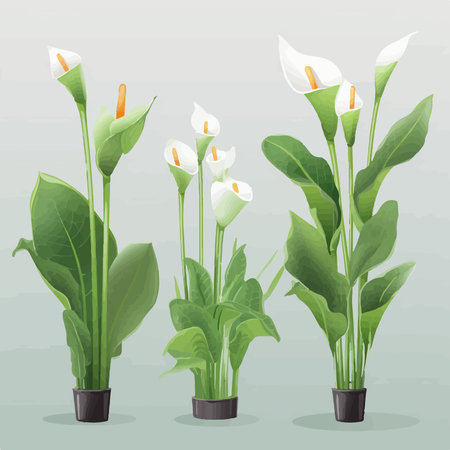Understanding Common Pests and Diseases in Indian Container Gardens
Container gardening is a popular choice across Indian cities, from Mumbai’s high-rise balconies to small patios in Delhi and Bengaluru. However, India’s unique climate zones—from humid coasts to dry interiors—bring specific challenges for container plants. Common pests that affect Indian container gardens include mealybugs, which often appear as white cottony clusters on hibiscus or curry leaf plants, and aphids, tiny green or black insects that suck sap from tender shoots of tulsi, mint, and rose. These pests can multiply rapidly in the warm Indian weather, especially during monsoon season when humidity is high.
Fungal infections are another frequent issue, with powdery mildew and root rot affecting popular plants like money plant (Epipremnum aureum) and jasmine (mogra). Overwatering—a common problem due to monsoon rains or overenthusiastic care—often leads to these diseases. Additionally, cultural concerns such as air pollution in urban centres or hard water in some regions may weaken plant immunity and make them more susceptible to pest and disease attacks.
Being aware of these typical threats is the first step towards keeping your Indian balcony or terrace garden healthy. In the following sections, we will explore how to identify these problems early and control them using simple, natural methods suited for Indian homes.
2. Natural Prevention Methods for Healthy Urban Gardens
Maintaining a healthy container garden in India’s urban spaces can be greatly enhanced by embracing traditional and sustainable practices. Indian home remedies have stood the test of time, offering simple yet effective ways to prevent pest infestations and plant diseases without resorting to chemical pesticides. Here are some trusted methods:
Neem Oil: The Ancient Protector
Neem oil, extracted from the seeds of the neem tree, is an age-old solution widely used in Indian households. It acts as a natural pesticide and fungicide, disrupting pests’ life cycles while being safe for humans and beneficial insects. To use, mix 5 ml of neem oil with 1 litre of water and add a few drops of mild soap. Spray this mixture on plants every week for preventive care.
Turmeric: Nature’s Antimicrobial Agent
Turmeric powder is not just for the kitchen—it’s also known for its antibacterial and antifungal properties. Dust turmeric powder around the base of your plants or make a paste with water to apply on infected areas. This helps curb fungal infections like root rot and damping off, common issues in humid Indian climates.
Companion Planting with Local Herbs
Traditional Indian wisdom suggests growing certain herbs together to naturally repel pests. Companion planting creates a balanced ecosystem that reduces the need for synthetic interventions. Here is a table highlighting effective combinations:
| Main Plant | Companion Herb | Benefit |
|---|---|---|
| Tomato | Tulsi (Holy Basil) | Repels whiteflies & improves growth |
| Cucumber | Coriander (Dhania) | Deters aphids & attracts pollinators |
| Chilli | Marigold (Genda) | Repels nematodes & beetles |
Sustainable Practices for Everyday Care
Practice regular garden hygiene by removing fallen leaves and debris to avoid pest breeding. Water your containers early in the morning to prevent excess moisture at night, which can lead to fungal issues. Rotate crops seasonally and use homemade compost to enrich soil health naturally.
Embracing Indian Traditions for Lasting Results
Combining these time-honoured methods ensures that your urban container garden remains vibrant, productive, and resilient—while respecting both nature and cultural heritage.

3. Safe Organic Solutions Commonly Used in India
Container gardening in India thrives when gardeners embrace traditional, safe, and sustainable pest management practices. Across the country, home gardeners rely on a variety of locally sourced and eco-friendly remedies to protect their plants from common pests and diseases. These methods not only preserve the health of your plants but also respect the environment and keep your harvest chemical-free.
Homemade Chili-Garlic Sprays
A popular and effective solution among Indian container gardeners is the chili-garlic spray. This potent mixture is made by blending fresh green chilies and garlic cloves with water, straining the liquid, and then spraying it directly onto affected plants. The natural compounds present in both chili and garlic repel a wide range of insects, such as aphids and caterpillars, without harming beneficial pollinators or soil life.
Cow Urine-Based Solutions
Cow urine, known locally as gomutra, has long been used in Indian organic farming for its antibacterial and antifungal properties. When diluted with water, gomutra can be sprayed onto foliage to prevent fungal infections and deter sap-sucking pests like whiteflies and mealybugs. This natural resource is widely available in rural areas and is valued for its affordability and effectiveness.
Bio-Pesticides from Local Ingredients
Indian gardeners often turn to bio-pesticides prepared from neem oil, turmeric, or fermented buttermilk. Neem oil, extracted from the seeds of the neem tree, acts as a broad-spectrum insect repellent while being gentle on the ecosystem. Turmeric solutions are effective against fungal diseases, especially in humid climates. Fermented buttermilk sprays help suppress powdery mildew on vegetable crops. All these remedies can be easily prepared at home with ingredients commonly found in Indian kitchens or local markets.
By adopting these organic practices, container gardeners across India are able to maintain healthy plants while nurturing biodiversity and reducing chemical dependency. Integrating such time-tested, natural solutions into your gardening routine ensures your containers remain vibrant and productive throughout the growing season.
4. Daily Care Tips for Robust Container Plants
Ensuring healthy and pest-resistant container plants in the Indian climate requires a combination of consistent care, traditional wisdom, and smart scheduling. Here are practical daily care tips tailored for Indian urban gardeners:
Watering Schedule According to Indian Weather
Indias diverse climate means your watering routine must adapt to local conditions. Overwatering can attract pests and promote root rot, while underwatering stresses plants, making them vulnerable. Refer to the table below for general guidance:
| Season | Recommended Watering Frequency | Best Time to Water |
|---|---|---|
| Summer (March-June) | Daily or alternate days | Early morning or late evening |
| Monsoon (June-September) | Check soil before watering; 2-3 times per week | Morning if needed |
| Winter (November-February) | Every 2-3 days | Late morning to avoid cold shock |
Sunlight Requirements for Indian Container Gardens
Most Indian vegetables and flowering plants thrive in at least 4-6 hours of direct sunlight. Place containers where they receive optimal sun—terraces, balconies, or verandahs facing east or south are ideal. For sensitive plants like coriander or spinach, partial shade during peak summer afternoons helps prevent wilting.
Traditional Aeration & Mulching Methods
Aerating container soil prevents compaction and root suffocation. In India, using a neem stick or bamboo skewer to gently poke holes in the soil is an age-old practice that promotes better airflow and healthier roots.
Mulching: A Natural Solution
- Apply a layer of dried leaves, coconut coir, or rice husk on top of the soil to conserve moisture and suppress weeds.
- This traditional technique not only reduces watering needs but also discourages common pests by maintaining even soil temperature.
Quick Tips:
- Avoid using chemical-laden mulch; opt for organic materials easily available in local markets.
- Rotate pots every few days for even sunlight exposure.
By following these daily care routines with a blend of modern understanding and traditional Indian methods, your container garden will remain vibrant and resilient against pests and diseases.
5. Spotting Warning Signs Early
One of the most important aspects of successful container gardening in India is learning to spot the first warning signs of plant stress or infection. Early detection can make all the difference, helping you protect your plants before problems get out of hand. Here’s how you can stay one step ahead:
Know What Healthy Looks Like
Start by familiarising yourself with the normal appearance of your plants—leaf shape, colour, and growth patterns. This makes it easier to notice anything unusual, such as yellowing leaves, spots, curling edges, stunted growth, or wilting.
Regular Inspections Are Key
Set aside time every few days to check your containers closely. Look under leaves and along stems for tiny pests like mealybugs or aphids, as well as fungal growth or powdery residue. Even small changes can be early signals of trouble.
Respond Quickly With Indian Home Remedies
If you spot early signs of distress—such as leaf discolouration or holes—don’t panic! Indian home remedies often work wonders at this stage. For example:
- Neem Oil Spray: A time-tested natural pesticide; simply dilute neem oil with water and spray on affected parts.
- Buttermilk Solution: Diluted buttermilk can prevent powdery mildew and other fungal issues.
- Tobacco Water: Soak tobacco leaves overnight, strain, and use as a spray against sucking pests (avoid on edible greens).
Tap Into Community Wisdom
Don’t hesitate to consult local gardeners or elders—they often have invaluable advice based on generations of experience with India’s unique climate and pest challenges. Sharing observations with neighbours can help everyone recognise problems earlier and act fast.
By making regular inspections part of your routine and acting swiftly with trusted Indian remedies, you’ll keep your container garden vibrant and resilient throughout the seasons.
6. Building a Support Network: Community Wisdom
One of the greatest strengths of Indian container gardening lies in our sense of community and shared learning. By connecting with local gardening groups, such as those on WhatsApp, nenjil, or neighbourhood samitis, you can tap into a wealth of region-specific knowledge that books or websites may not offer. In these circles, fellow gardeners freely share their experiences about battling common pests like mealybugs, aphids, and whiteflies, or discuss organic disease control methods suited to our varied climates from Chennai’s humidity to Delhi’s dry summers.
The Power of Local Language & Tradition
Exchanging tips in your mother tongue, whether it’s Hindi, Tamil, Bengali, Telugu, or Marathi, helps make advice more relatable and actionable. Our traditional wisdom—like using neem oil, turmeric solutions, or ash dusting—often works better for Indian conditions than imported chemical solutions. When you join these groups, don’t hesitate to ask questions or share your own stories; even small balcony successes can inspire others!
Events and Knowledge Sharing
Many urban gardening communities host offline meetups at local parks or temples where members swap seeds, saplings, and pest control remedies. By participating in these gatherings—or virtual workshops—you learn what works best for your area’s microclimate and crops. You’ll also discover which natural ingredients are easily available at your local kirana store or mandi.
Together We Grow Stronger
In India, gardening isn’t just a solitary hobby—it’s an act of community care and environmental stewardship. By building relationships with other gardeners, you not only improve your own container garden but also contribute to a larger movement for sustainable, chemical-free urban food growing. Let’s continue to nurture our green spaces together by exchanging wisdom and supporting each other through every season!

